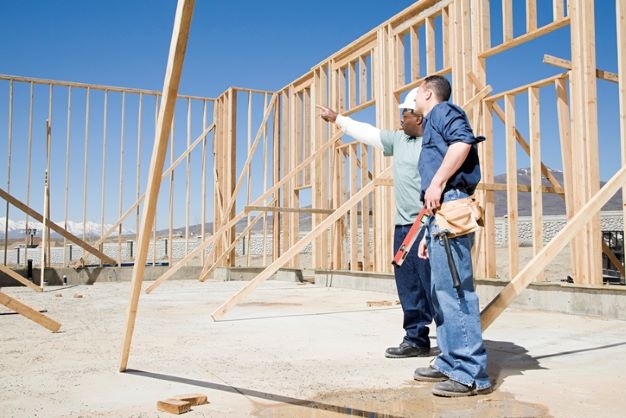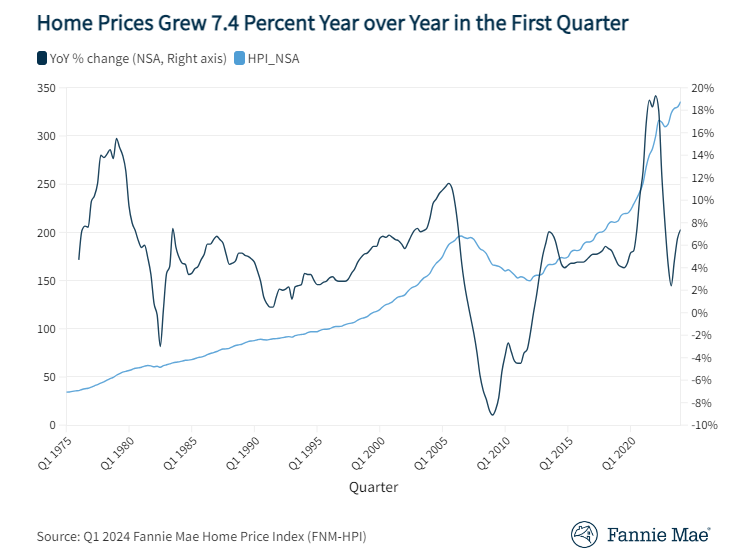
Housing Starts, Permits Fell Again In October

Multifamily units continued to be built at a better rate than single-family homes.
- Housing starts in October were at a seasonally adjusted annual rate of 1.43 million, down 4.2% from the revised September.
- Single‐family housing starts in October were down 6.1% from September.
- The October rate for buildings with five units or more fell just 0.5% from September, and was up 17.3% from October 2021.
With builder confidence falling to levels last seen at the onset of the COVID-19 pandemic thanks to inflation and the growing scarcity of buyers, housing starts fell another 4.2% in October, according to the latest report.
Multifamily units continued to be built at a better rate than single-family homes.
Privately owned housing starts in October were at a seasonally adjusted annual rate of 1.43 million, down 4.2% from the revised September estimate of 1.49 million and 8.8% below the October 2021 rate of 1.56 million, the U.S. Census Bureau and the U.S. Department of Housing and Urban Development reported jointly Thursday.
Single‐family housing starts in October were at an annual rate of 855,000, down 6.1% from the revised September figure of 911,000, and down nearly 21% from the October 2021 rate of 1.08 million.
The October rate for buildings with five units or more was 556,000, down just 0.5% from the September rate of 559,000 but up 17.3% from the October 2021 rate of 474,000.
The overall number of homes completed also fell in October, to a seasonally adjusted annual rate of 1.34 million, down 6.4% from the revised September estimate of 1.43 million but 6.6% more thanthe October 2021 rate of 1.26 million.
Single‐family housing completions in October were at a rate of 961,000, 8.3% below the revised September rate of 1.05 million. The October rate for buildings with five units or more was 362,000, down 5% from a revised 381,000 in September but up 18.3% from 306,000 in October of last year.
First American Financial Corp. Deputy Chief Economist Odeta Kushi sees an opportunity for builders in the report.
“As builders pull back on starting new projects, they will have greater opportunity to bring to market the large backlog of homes in their pipelines that are already under construction,” Kushi said. “The number of single-family homes under construction remains elevated due to construction delays brought on by labor and material shortages. The number of single-family homes under construction peaked in spring 2022 at 828,000 units, and has since declined to 794,000 units, which remains well above the 2019 average of 527,000.”
The National Association of Home Builders on Wednesday said its NAHB/Wells Fargo Housing Market Index (HMI), which tracks builder confidence in the market for newly built single-family homes, fell for the 11th straight month in November.
The index fell five points to 33, back to levels seen at the onset of the COVID-19 pandemic in the spring of 2020. The index ended last year on a strong note, rising to 84 in December. It has fallen in every month since then.
Kushi noted that the cost of construction materials and for labor remain “significantly” elevated, “though material costs have shown some signs of easing. Prices for steel, plywood, copper, gypsum, and concrete all remain significantly higher than pre-pandemic, but recorded month-over-month declines in October.”
“On the labor side,” she added, “according to the October jobs report, average hourly earnings in construction were up 6.6% on a year-over-year basis, significantly above the pre-pandemic average pace of approximately 2.8 percent.”
Housing affordability is also a concern, Kushi said, as mortgage rates remain high compared to last year.
“The average 30-year, fixed mortgage rate in October was 3.8 percentage points higher than one year ago,” she said “Holding income constant, the increase in rates reduced house-buying power by approximately $178,000.”
That, and the declining builder confidence, explains the decline in permits for new construction in October. According to the report, privately owned housing units authorized by building permits in October were at a seasonally adjusted annual rate of 1.53 million, down 2.4% from the revised September rate of 1.56 million and 10.1% below the October 2021 rate of 1.7 million.
Single‐family authorizations in October were at a rate of 839,000, 3.6% below the revised September figure of 870,000 and 22.1% below the figure of 1.08 million a year earlier.
Authorizations of buildings with five units or more were at a rate of 633,000 in October, down about 2% from a revised 645,000 in September but up 11.2% from 569,000 a year earlier.
“The elevated price of labor and materials are passed on to the consumer in the form of higher new-home prices during a time when affordability is down,” Kushi said, “presenting a challenge for builders who are trying to attract potential home buyers by cutting prices and offering incentives, but are limited by these high material and labor costs. The median sale price for new homes remains near an all-time high.”
The NAHB/Wells Fargo HMI also found that 59% of builders surveyed are offering incentives to buyers, including paying points, offering mortgage rate buydowns, and cutting prices.
Kushi did see a positive in the report, with multifamily construction remaining strong. “More multi-family supply may ultimately put some downward pressure on rents,” she said.




